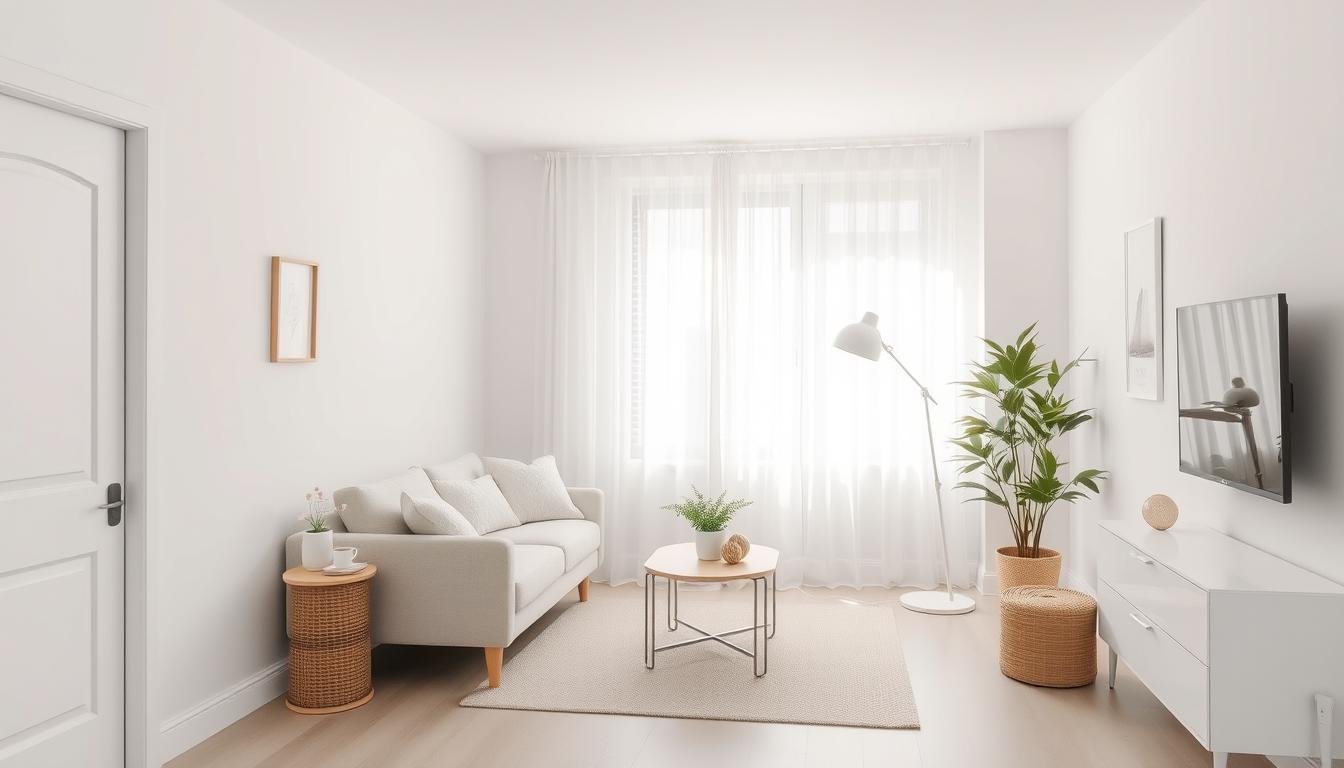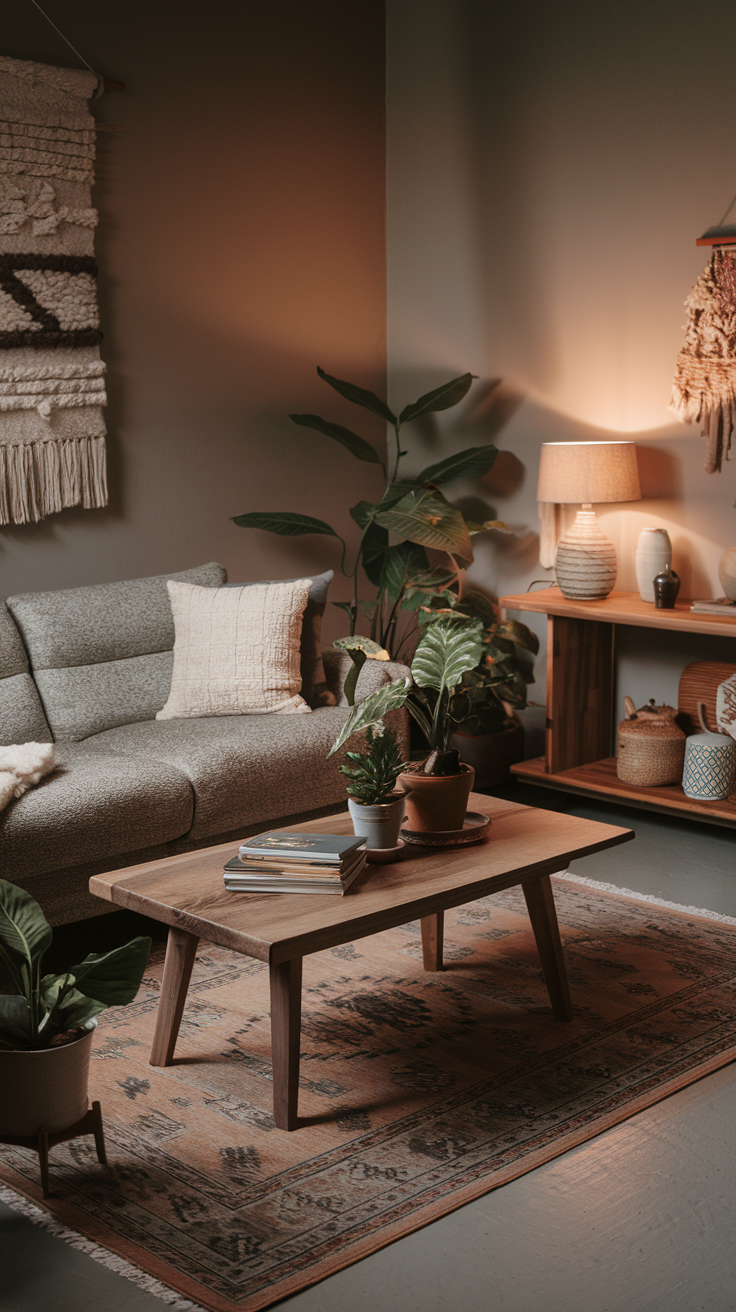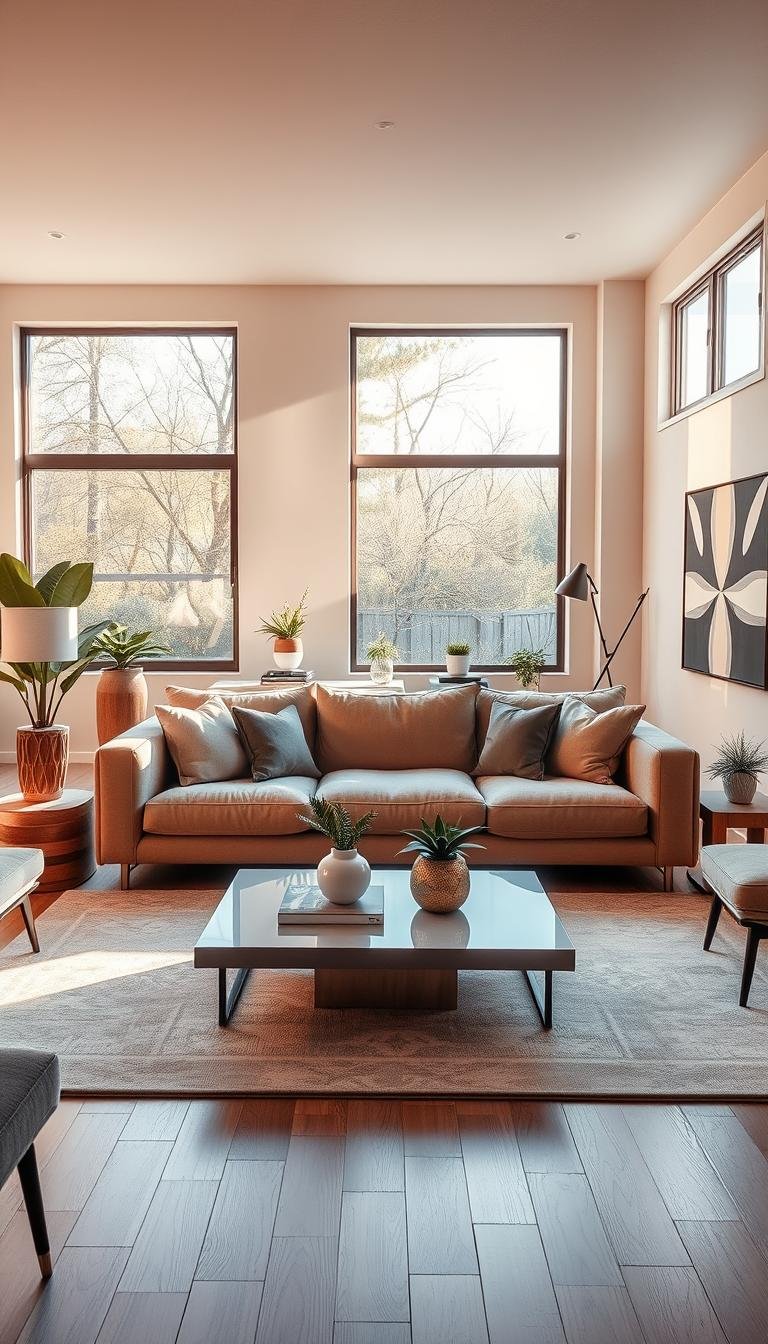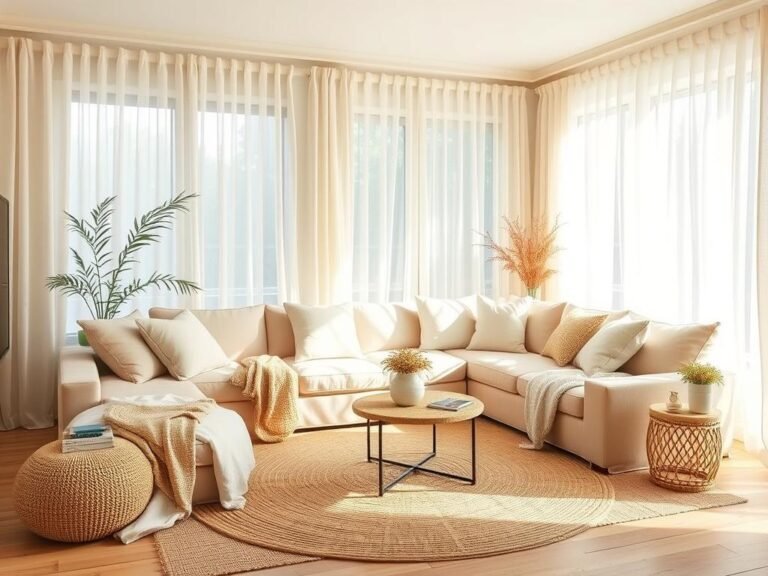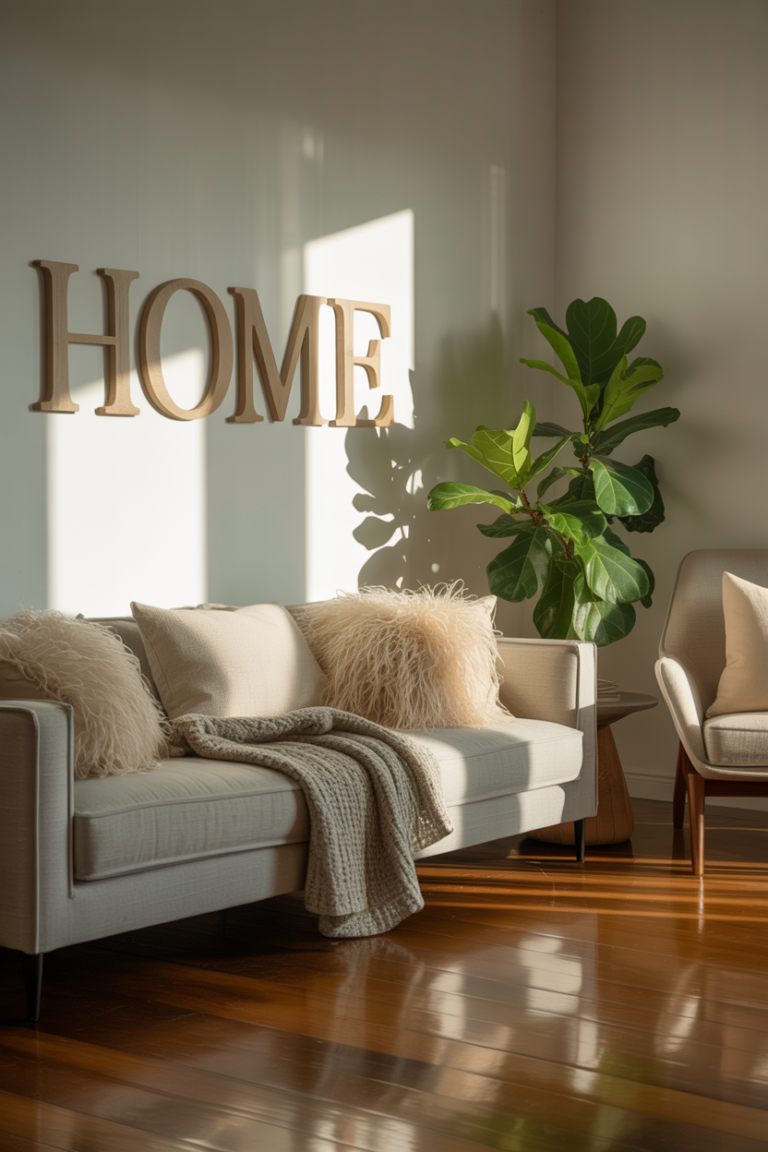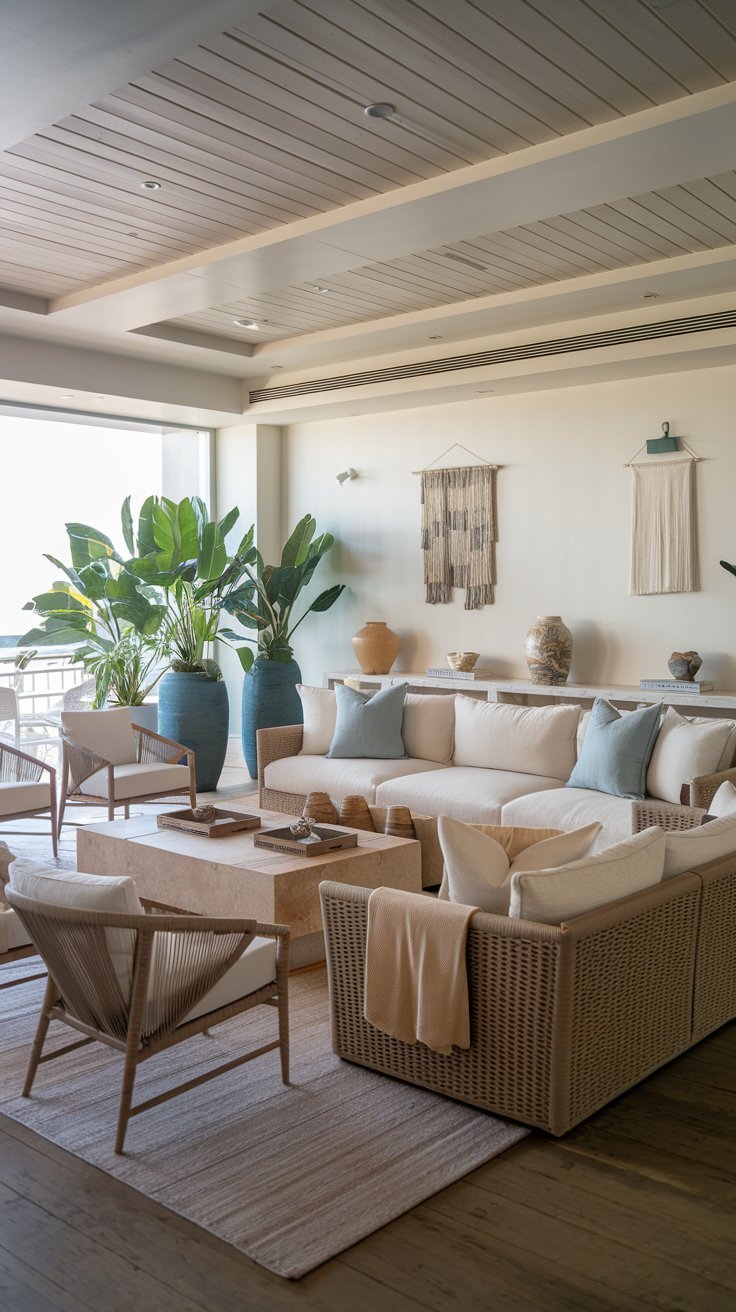How to Decorate a Small Living Room Without Making It Look Crowded
Living in a compact space doesn’t mean you have to compromise on style or comfort. With thoughtful small living room decor choices, you can transform even the tiniest area into a welcoming haven that feels spacious and stylish. Whether you’re in a cozy apartment, a compact condo, or a small house, these practical decorating tips will help you make the most of every square inch without creating a cramped feel. Let’s explore how to give your small living room a big personality!
Embrace Light, Neutral Colors
One of the most effective ways to make a small living room feel bigger is to use light, neutral colors. Dark hues tend to absorb light and make walls appear closer, while lighter tones reflect light and create an airy, open feeling. Consider painting your walls in soft whites, pale grays, or gentle beiges to instantly expand your visual space.
For maximum effect, extend this light color palette to your larger furniture pieces like sofas and armchairs. This creates a seamless look that prevents the eye from stopping at harsh color contrasts, allowing your gaze to flow smoothly throughout the room and perceive more space.
Quick Color Tip
If you’re renting and can’t paint, try using removable wallpaper in light patterns or adding light-colored slipcovers to existing furniture for a similar space-expanding effect.
Choose Multi-Functional Furniture
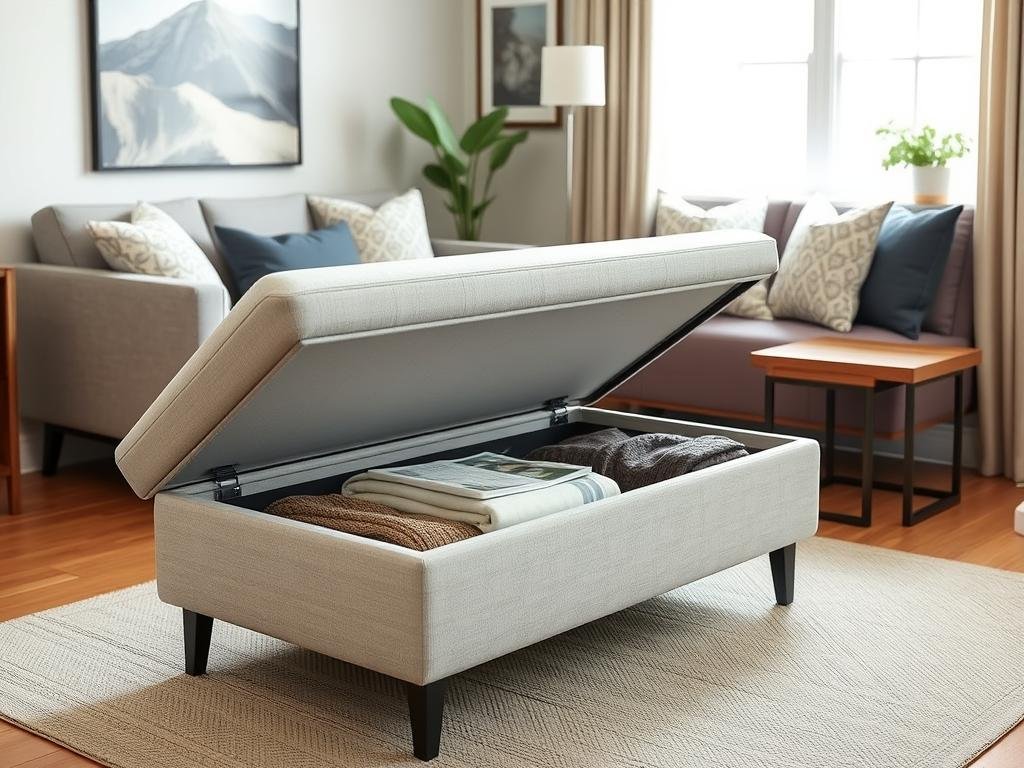
In a small living room, every piece of furniture should earn its keep by serving multiple purposes. Look for clever designs that offer functionality beyond their primary use. Storage ottomans are perfect examples—they can function as coffee tables, extra seating, and hidden storage all in one compact footprint.
Storage Solutions
- Storage ottomans that double as seating
- Sofas with built-in storage underneath
- Nesting tables that can be expanded when needed
- Coffee tables with lift-tops for dining or working
Space-Saving Designs
- Sleeper sofas for overnight guests
- Extendable dining tables for entertaining
- Fold-down desks for work-from-home needs
- Modular furniture that can be rearranged
Reader Favorite
This versatile storage ottoman has become a customer favorite for its sturdy construction and generous storage capacity—perfect for small living rooms!
Add Mirrors to Create Depth
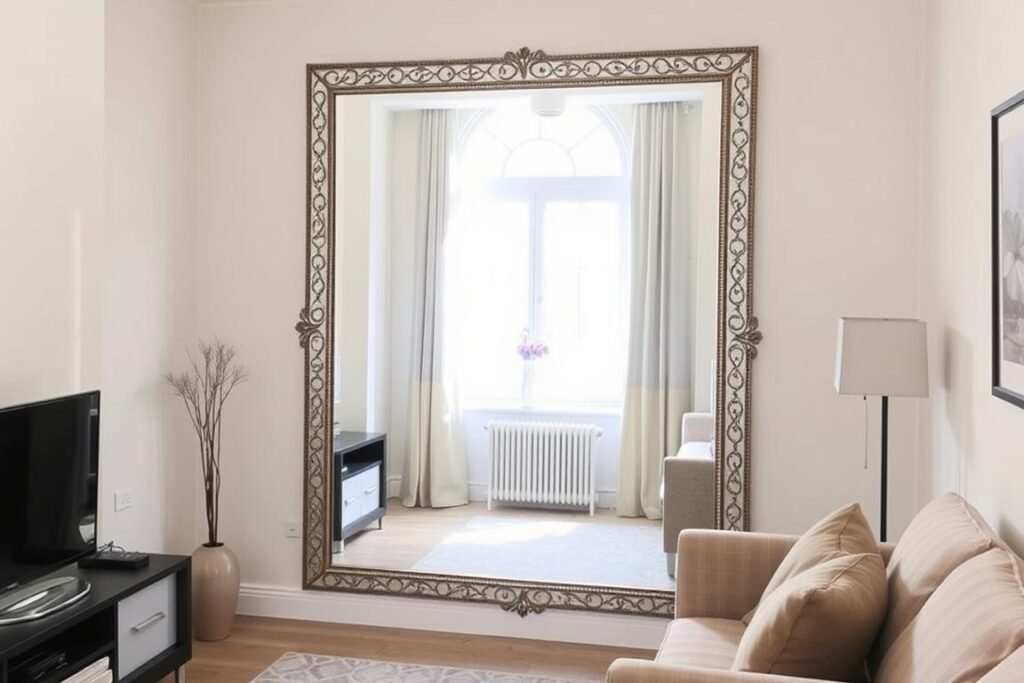
Mirrors are like magic wands for small living rooms—they reflect light, create the illusion of depth, and visually double your space. The strategic placement of mirrors can transform a cramped room into one that feels open and breathable.
Mirror Placement Tips
- Position mirrors opposite windows to bounce natural light throughout the room
- Use a large floor mirror to create the impression of another “room” beyond
- Hang a mirror behind a light source (like a lamp or candle) to amplify the light
- Consider mirrored furniture for subtle space-expanding effects
For maximum impact, choose a mirror that’s proportional to your wall space. A too-small mirror can look like an afterthought, while an appropriately sized one makes a statement while performing its space-enhancing duties.
Designer Tip
A leaning floor mirror not only creates depth but also adds a relaxed, contemporary vibe to your small living room.
Opt for Leggy Furniture
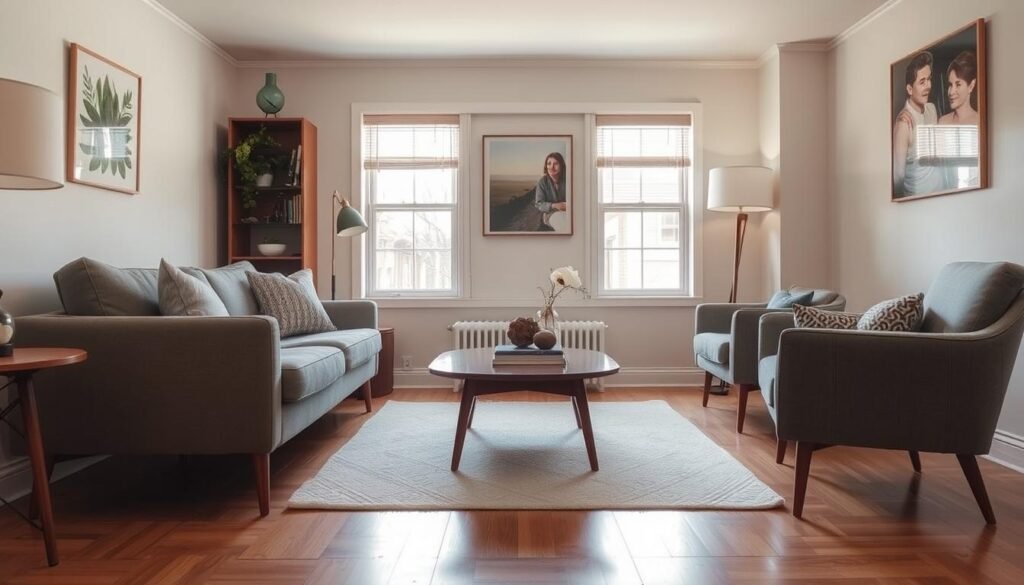
When furnishing a small living room, what you don’t see matters as much as what you do. Furniture with exposed legs creates visual breathing room by allowing you to see more of the floor. This simple design choice can make your space feel significantly more open compared to pieces that sit directly on the floor.
Mid-century modern sofas and chairs are perfect examples of leggy furniture that works well in compact spaces. Their slim profiles and tapered legs create an airy feel without sacrificing comfort or style. Even your coffee table and side tables should ideally have visible space underneath.
“The more floor you can see, the larger the room will feel. It’s a simple optical illusion that makes a dramatic difference in small spaces.”
Space-Saving Style
This mid-century inspired sofa combines slim legs with a compact profile—perfect for small living rooms that don’t want to sacrifice style.
Hang Curtains High and Wide
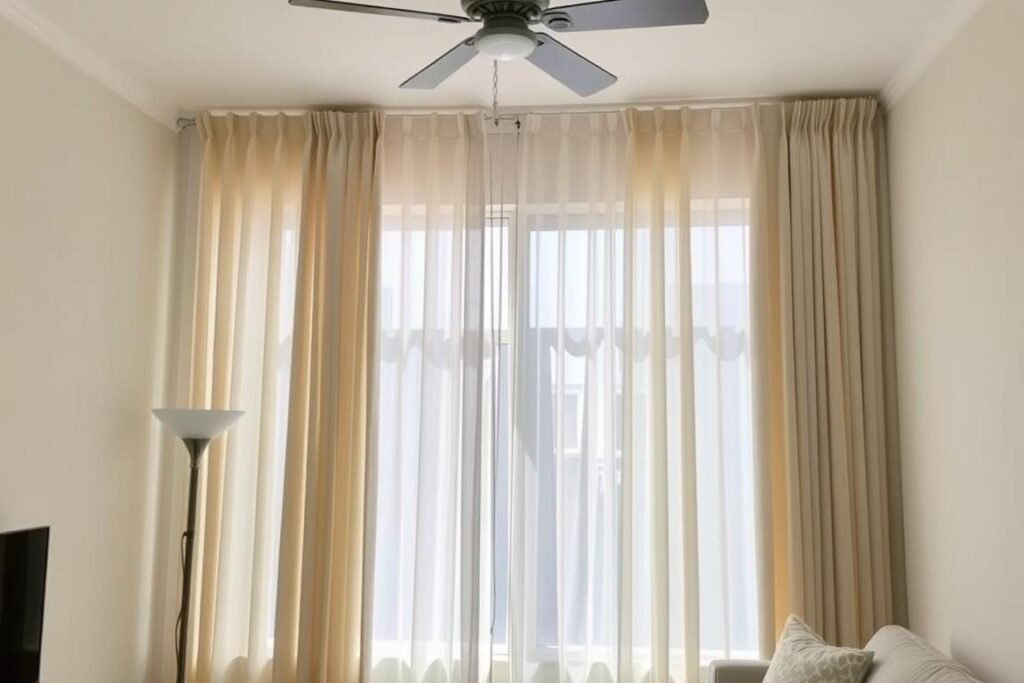
One of the simplest yet most effective tricks to make your small living room feel larger is to hang your curtains high and wide. Instead of mounting curtain rods directly above your window frame, place them closer to the ceiling and extend them 6-12 inches beyond each side of the window.
This visual trick creates the illusion of taller ceilings and wider windows, instantly expanding your perceived space. For maximum effect, choose curtains that match or closely coordinate with your wall color to create a seamless look.
Curtain Selection Tips
- Opt for light-filtering fabrics like linen or sheer polyester that allow natural light to enter
- Choose floor-length curtains that create vertical lines, drawing the eye upward
- Consider wave-fold or ripple-fold styles for a clean, modern look
- Avoid heavy, dark fabrics that can make the space feel closed in
Window Treatment Upgrade
These sheer linen-look curtains filter light beautifully while adding height to your small living room.
Utilize Vertical Storage
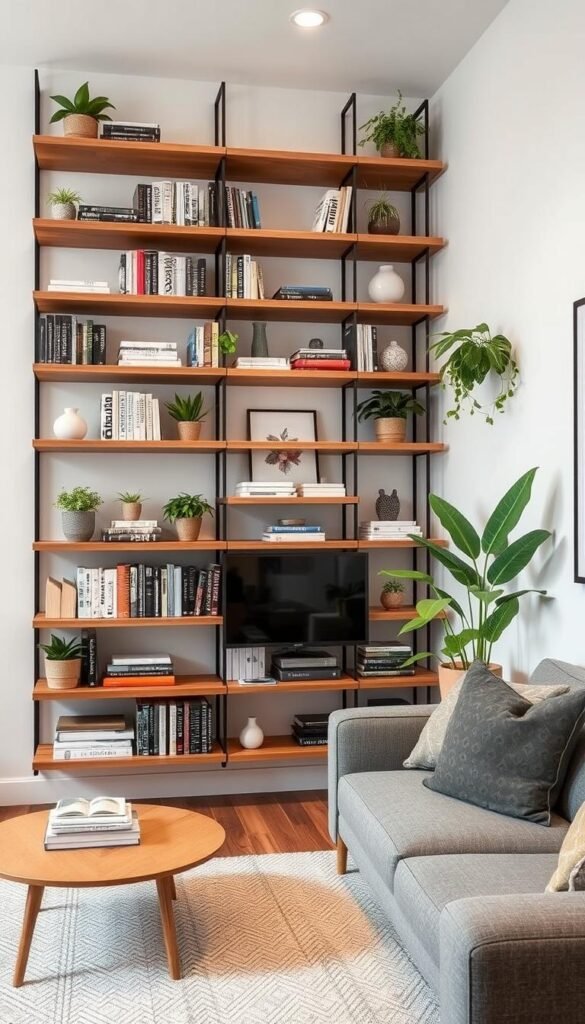
When floor space is limited, look up! Vertical storage solutions are essential for small living room decor that maximizes functionality without contributing to a cramped feel. Wall-mounted shelving, bookcases that reach to the ceiling, and tall, narrow cabinets all make use of often-overlooked vertical space.
Floating shelves are particularly effective in small spaces because they provide storage and display areas without the visual weight of traditional bookcases. They draw the eye upward, creating the perception of height while keeping valuable floor space clear.
Floating Shelf Ideas
- Install a series of shelves in a staggered pattern for visual interest
- Use corner floating shelves to utilize often-wasted corner spaces
- Create a gallery wall with a mix of shelves and artwork
- Install shelves above doorways for additional storage
Styling Your Shelves
- Leave plenty of negative space to avoid a cluttered look
- Group similar items together for a cohesive appearance
- Incorporate plants to add life and color
- Use baskets or decorative boxes to hide smaller items
Vertical Storage Solution
These sleek floating shelves provide storage without bulk and can be arranged in countless configurations to suit your space.
Choose Minimal but Impactful Décor
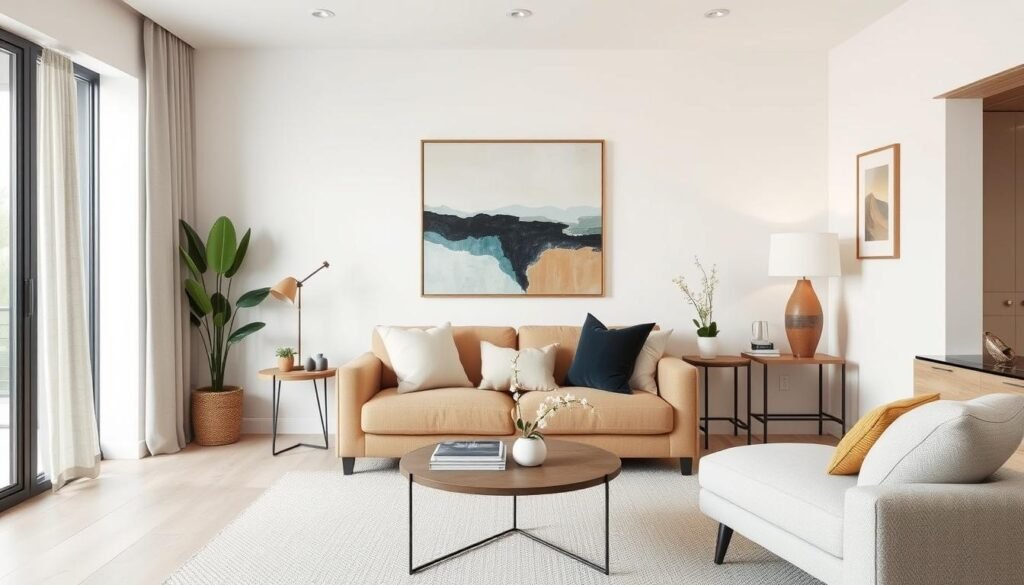
When it comes to decorating a small living room, the “less is more” philosophy truly shines. Instead of filling every surface with knickknacks and accessories, select fewer but more impactful pieces that make a statement without creating visual clutter.
One large piece of artwork can have far more impact than a gallery of smaller pieces. Similarly, one striking table lamp or floor lamp can serve as both a functional light source and a sculptural element that anchors your space.
Statement Piece Ideas
- An oversized piece of art that reflects your personal style
- A distinctive floor lamp with architectural presence
- A textured area rug that defines your seating area
- A single large plant that adds life and dimension
“In small spaces, each item should earn its keep by being both beautiful and functional. Be ruthlessly selective about what you allow into your living room.”
Statement Lighting
This architectural floor lamp serves as both functional lighting and a striking design element that draws the eye upward.
Mind Your Scale and Proportion
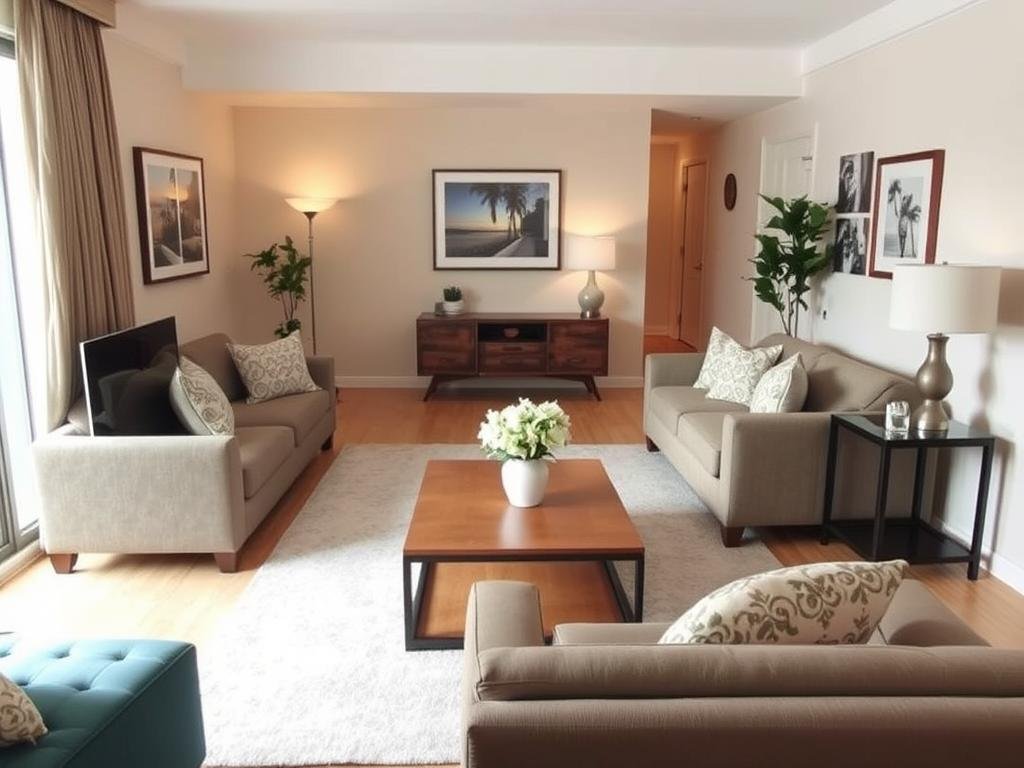
Choosing the right scale of furniture for your small living room is crucial for creating a balanced, harmonious space. Oversized pieces can quickly overwhelm a compact room, while furniture that’s too small can look out of place and fail to provide adequate comfort.
Look for apartment-sized sofas and loveseats designed specifically for smaller spaces. These pieces offer the comfort of full-sized furniture but with dimensions that work in limited square footage. Similarly, choose coffee tables and side tables that are proportional to your seating—a massive coffee table paired with a compact sofa creates visual discord.
Measuring Tip
Before purchasing any furniture, use painter’s tape to mark out its dimensions on your floor. This simple step helps you visualize how the piece will fit and how much walking space will remain around it.
Remember that negative space—the empty area around and between furniture—is just as important as the furniture itself. Leaving breathing room prevents that cramped, overcrowded feeling that can make a small living room feel claustrophobic.
Perfect Proportion
This apartment-sized sofa offers full comfort with dimensions specifically designed for smaller living spaces.
Incorporate Clear or Acrylic Furniture
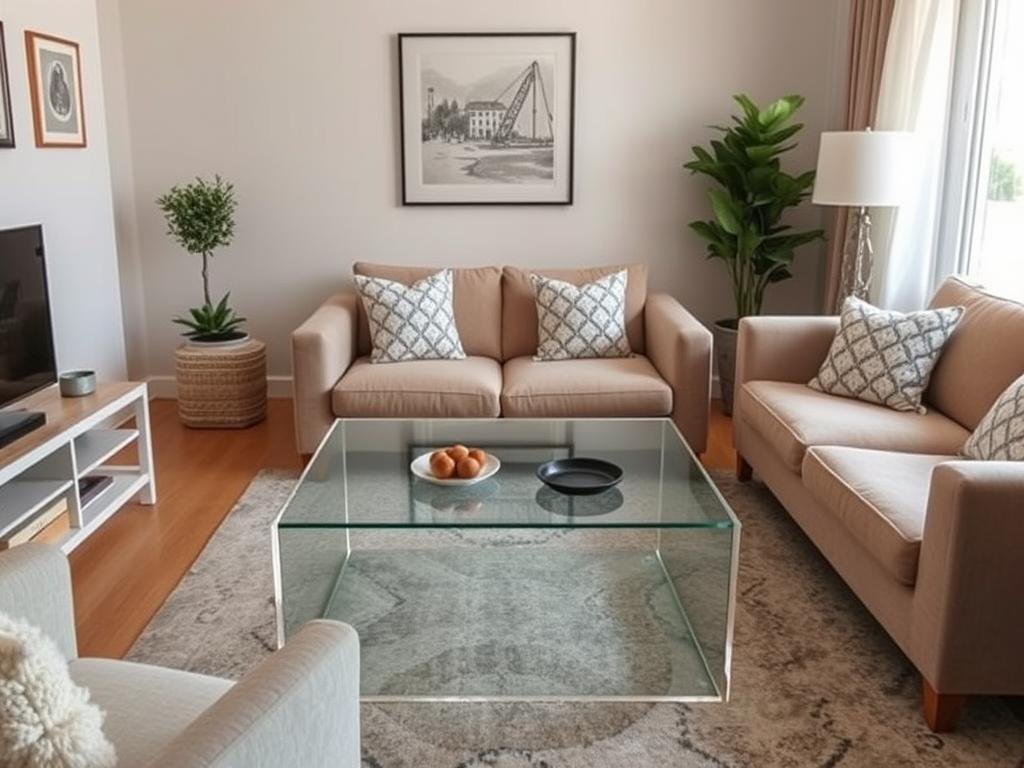
Clear acrylic furniture—often called “ghost” or “invisible” furniture—is a small space decorator’s secret weapon. These transparent pieces provide function without adding visual weight to your room. A clear coffee table, side table, or even dining chairs can make your small living room feel more open while still providing all the functionality you need.
The beauty of acrylic furniture lies in its ability to disappear visually. Unlike solid wood or upholstered pieces that block sightlines, clear furniture allows your eye to travel through it, creating an uninterrupted view that makes the space feel larger and more open.
Best Clear Furniture Pieces for Small Spaces
- Coffee tables with clean, simple lines
- Nesting side tables that can be tucked away when not needed
- Console tables for entryways or behind sofas
- Dining chairs that can double as extra seating for guests
Visual Lightness
This acrylic coffee table provides function without visual weight—perfect for making your small living room feel more open.
Layer Your Lighting
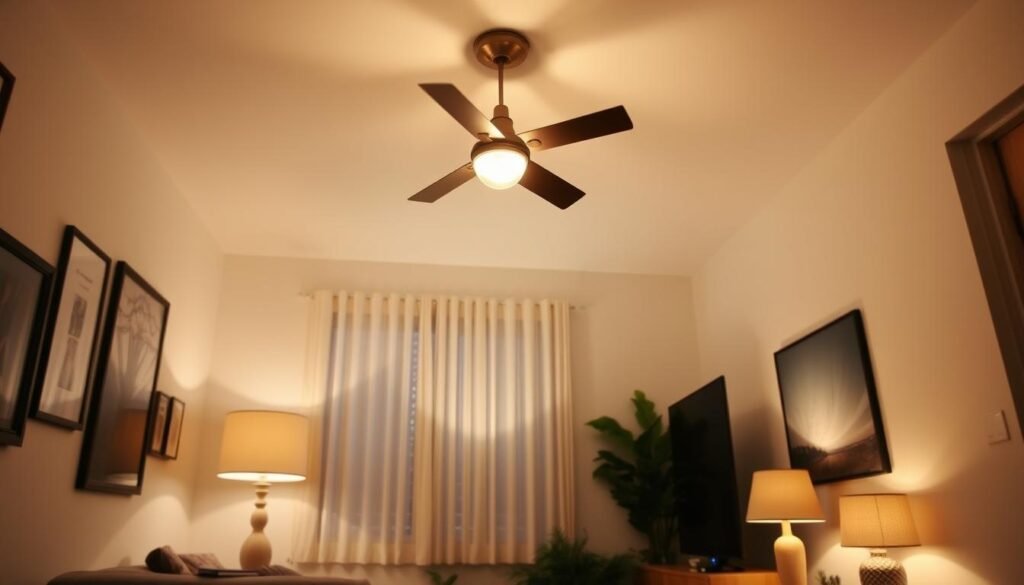
Proper lighting can transform a small living room from feeling cramped to feeling cozy and inviting. The key is to incorporate multiple light sources at different heights rather than relying solely on one overhead fixture. This layered approach creates depth and dimension, making your space feel larger and more dynamic.
Ambient Lighting
Your main light source that illuminates the entire room. Consider flush-mount ceiling fixtures that don’t hang down into the space or recessed lighting for a clean look.
Task Lighting
Focused light for specific activities like reading or working. Floor lamps with adjustable heads or table lamps on side tables provide targeted illumination.
Accent Lighting
Decorative lighting that adds atmosphere and highlights features. Wall sconces, picture lights, or LED strips behind furniture create visual interest.
Opt for light fixtures with slim profiles that don’t take up much visual space. Wall-mounted sconces are particularly effective in small living rooms as they provide light without consuming valuable table or floor space.
Space-Saving Illumination
These sleek wall sconces provide beautiful ambient lighting without taking up any floor or table space.
Define Zones with Area Rugs
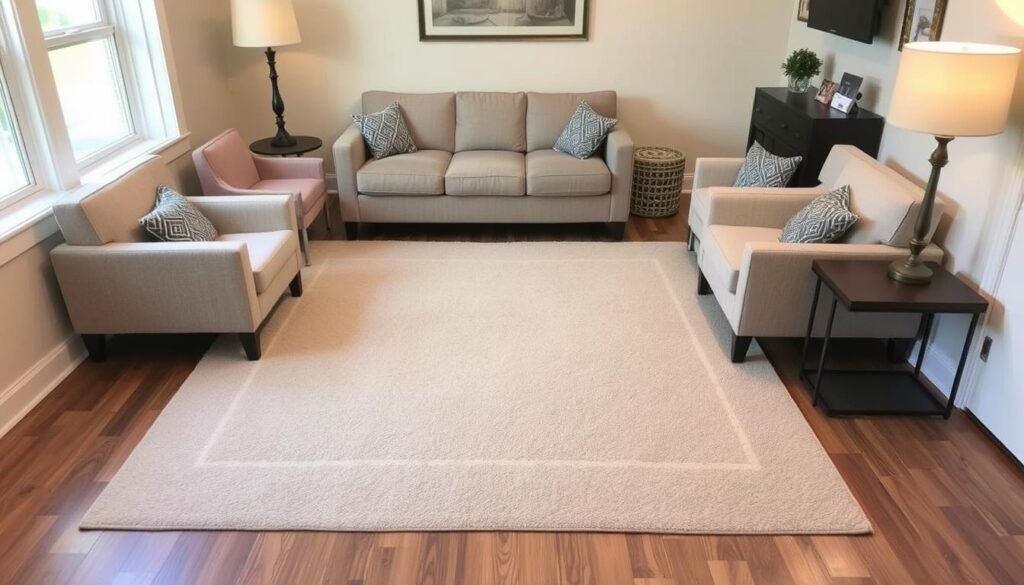
Even in the smallest living rooms, you can create distinct functional zones with the strategic use of area rugs. A well-placed rug defines your seating area, anchoring furniture pieces together to create a cohesive conversation space without the need for physical dividers that would make the room feel smaller.
When selecting a rug for a small living room, size matters. A rug that’s too small can make the space feel disjointed, while one that’s too large can overwhelm the room. Aim for a rug large enough to fit under the front legs of all seating furniture in your arrangement.
Rug Selection Tips
- Choose light colors or subtle patterns that won’t visually shrink your space
- Consider low-pile rugs that are easier to clean and don’t add visual bulk
- Look for rugs with simple, minimal patterns rather than busy designs
- Ensure the rug is proportional to your seating arrangement
Space-Defining Style
This low-pile area rug features a subtle pattern that adds interest without overwhelming your small space.
Embrace Minimalism and Declutter
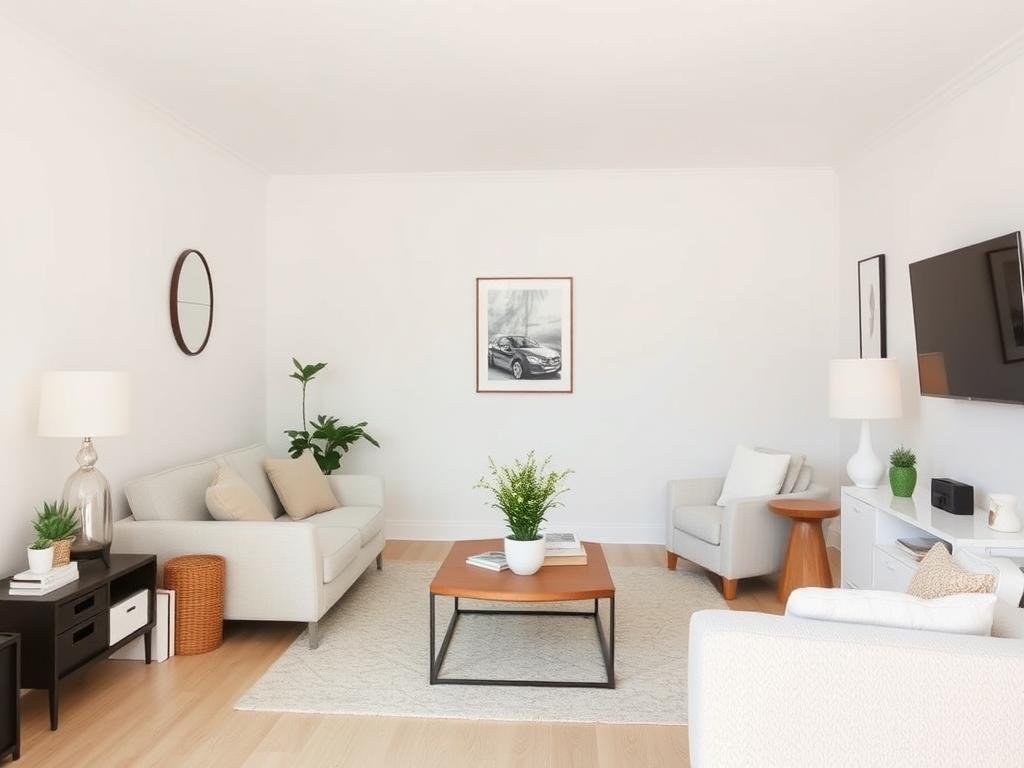
Perhaps the most important principle for small living room decor is embracing minimalism. Clutter is the enemy of small spaces, making them feel cramped and chaotic rather than cozy and intentional. Adopting a “less is more” approach allows each element in your room to shine while creating visual breathing room.
This doesn’t mean your space needs to feel sterile or impersonal. Rather, it’s about being intentional with what you choose to display and store. Each item should either serve a purpose or bring you joy—ideally both!
The One-In, One-Out Rule
To maintain a clutter-free small living room, adopt the one-in, one-out rule: For every new item you bring into your space, remove something else. This simple practice prevents accumulation over time.
Hidden storage is essential for maintaining a minimalist look while still having access to the items you need. Look for furniture with concealed storage compartments, and use decorative baskets or boxes to corral smaller items like remote controls, gaming accessories, or reading materials.
Stylish Storage
These decorative storage baskets help contain clutter while adding texture and visual interest to your space.
Create Your Perfect Small Living Room

Decorating a small living room is all about making thoughtful choices that maximize both style and function. By embracing light colors, choosing appropriately scaled furniture, utilizing vertical space, and keeping clutter at bay, you can create a space that feels open, inviting, and perfectly suited to your lifestyle.
Remember that small spaces often feel more intimate and cozy than their larger counterparts—an advantage worth celebrating! With the right design approach, your compact living room can become the most cherished space in your home.
🛋️ Don’t sacrifice style for space—try these tips and give your small living room a big personality.
Which of these small living room decor ideas will you try first? Whether you start with a fresh coat of paint, invest in multi-functional furniture, or simply declutter your existing space, each step you take will bring you closer to a living room that feels both spacious and stylish.
Frequently Asked Questions
What colors make a small living room look bigger?
Light, neutral colors like soft whites, pale grays, light beiges, and pastels are best for making a small living room appear larger. These colors reflect light rather than absorbing it, creating an airy, open feeling. For a cohesive look that maximizes the space-expanding effect, consider using the same light color for both walls and trim.
How should I arrange furniture in a small living room?
In a small living room, prioritize traffic flow by leaving clear pathways through the space. Float furniture away from walls when possible to create a sense of depth. Arrange seating to face each other for conversation rather than lining everything against walls. Consider using fewer, more versatile pieces rather than many small pieces, which can make the room feel cluttered.
What type of sofa works best in a small living room?
Look for apartment-sized sofas or loveseats with slim profiles and exposed legs. Avoid bulky, overstuffed styles that take up more visual space. For maximum flexibility, consider a sleeper sofa that can accommodate overnight guests or a sectional designed specifically for small spaces, which can provide more seating than a sofa and chair combination.
How can I make my small living room feel cozier without adding clutter?
Add texture rather than additional objects to create coziness. Incorporate soft throw blankets, plush pillows, and textured rugs that add warmth without taking up extra space. Layer your lighting to create a warm ambiance with table lamps and floor lamps rather than relying solely on harsh overhead lighting. Consider adding plants, which bring life to a space without creating visual clutter.
